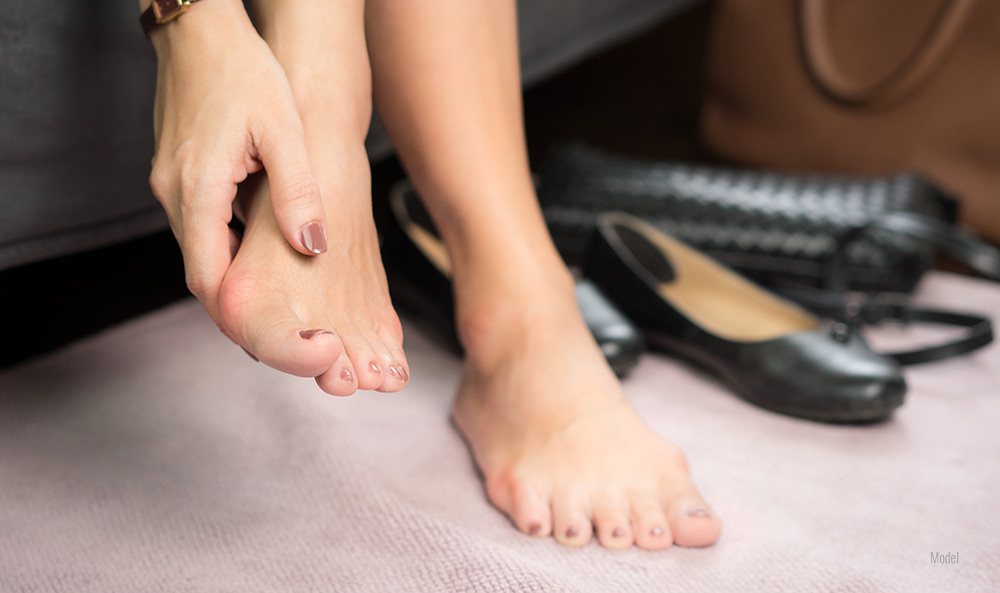Is It Better To Have Bunion Surgery Early?
Posted May 03, 2024 in Bunion Pain

This blog discusses the early signs of bunions, what to do when bunions are forming, and why early intervention–surgical or non-surgical–is crucial.
4 Min Read:
Can You Put Off Bunion Surgery?
No one wants to endure foot pain, so if that’s what you have, decisions need to be made. No one wants surgery, but if it’s necessary, when is the best time to do it? If you have a bunion, you might be weighing the pros and cons of waiting to undergo your bunionectomy, especially if you live an active lifestyle and recovery does not sound appealing.
Below, we’ll discuss bunion treatment options, including surgery and conservative care, and what steps to take to get the treatment you need as soon as possible to avoid further damage.
How Do I Know If I Have a Bunion?
Although bunions are one of the most common foot ailments, they can be hard to detect at first. A bunion forms when the first metatarsal-phalangeal (MTP) joint, which is at the base of the big toe, is misaligned.
The bunion appears as a bony protrusion on the side of the affected joint. It causes the toe to angle towards the second toe, progressively becoming more misaligned and crowding the other toes.
Early Bunion Signs
If you think you may be developing a bunion, one of the earliest and most common signs is pain. You may experience soreness, a throbbing sensation, or sharp pain around the joint of your big toe while walking, after a long day of standing or walking, or even at rest.
Another early sign is redness or swelling around the joint, paired with discomfort. Some patients even experience a reduced ability to move their big toe, or calluses or corns where the big toe rubs against the second toe (although this is usually seen in more advanced cases).
Of course, you may also notice the bunion, which looks like a lump or protrusion on the side of the foot.
What To Do When You Notice a Bunion
If you think you have a bunion, or you suspect one is starting to form, you can take some immediate steps to slow its progression.
Bunions can form due to genetics (the shape of your foot), arthritis, or footwear. People who wear high heels are more likely to develop bunions, as more weight is distributed to the toes, and the shoes are narrower, causing the feet to cramp.
If you notice a bunion forming, switch your footwear to something more supportive, and definitely avoid high heels or narrow shoes.
The best way to deal with an early bunion (or suspected bunion) is to see your NYC podiatrist at Chelsea Foot & Ankle. Our experts will perform precise diagnostics to get you the bunion care you need.
What Are My Non-surgical Bunion Treatment Options?
At Chelsea Foot & Ankle, our podiatrists believe in utilizing conservative treatments before surgery. This ensures proper, extensive diagnostics and non-surgical treatments to keep our patients out of the OR and avoid unnecessary risks.
Conservative treatment of bunions may involve protective pads that help cushion the joint, paired with more comfortable shoes.
You may also have the option of custom orthotics, which support the joint and keep the foot in a more comfortable aligned position.
When Is Surgery Necessary For Bunion Treatment?
In severe cases in which the joint is impacting the other toes, causing pain, swelling, a loss of mobility, and painful corns and calluses, surgery may be necessary. However, surgery should only be suggested after your podiatrist has exhausted all other conservative treatment options.
If your podiatrist thinks that surgery is your best option for treating your bunion, it’s a good idea to get it taken care of as soon as possible. Not only is bunion surgery generally more effective the sooner it’s done, but leaving a bunion to progress is dangerous and can cause issues down the line.
An untreated bunion can result in loss of mobility in the first toe, debilitating arthritis, and pain. The longer you wait to treat your bunion, be it through surgery or conservative treatments, the more difficult it is to be rid of.
Are You Ready for Bunion Surgery in New York City?
Whether you think you need bunion surgery, want a second opinion, or want an initial diagnosis, Chelsea Foot & Ankle can help. Our podiatrists understand how important it is for our patients to get back up on their feet and are dedicated to providing precise and efficient diagnostics. Call Chelsea Foot & Ankle today at (646) 929-4149 or fill out our online contact form to get started.
